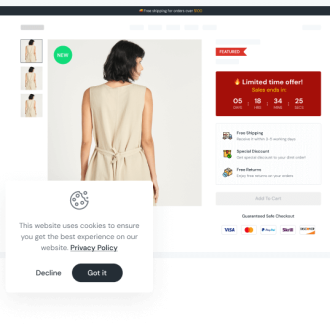Competitive pricing is about setting strategic price points for your products based on the pricing of similar products sold by competitors in your market. For example, a cosmetics business might research the costs their top competitors charge for lipstick and base their own lipstick pricing on that information.
The most common use of competitive pricing is to lower your competitors’ prices and persuade consumers to buy from you by offering the best price. But that’s not the only case of competitive pricing, as we’ll discuss in the section after this one.
Competitive Pricing Strategies
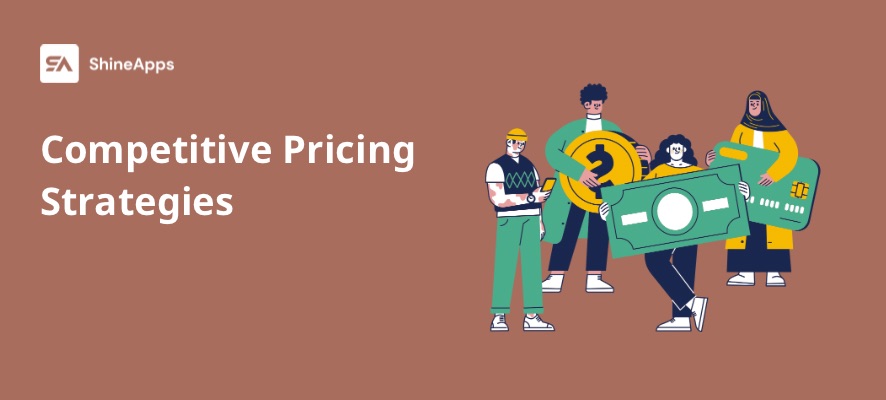
Sellers need to follow one of the following three competitive pricing models:
Lower Prices - Competitive Pricing
In particular, if they are of similar quality, pricing your products lower than those of your competitors gives you a clear point of differentiation. Who doesn’t enjoy saving money, after all?
Of course, cheaper prices decrease your margins, which reduces your profitability. Due to this, it happens frequently in two situations:
Using economies of scale: If you can purchase items in large quantities, you can reduce the price of your goods without affecting your profit margins.
A “loss leader” product is being promoted: Selling a product below its cost may help you attract new customers who will ideally go on to buy items that are more expensive. They enter brand-new markets and often use this strategy.
Similar Prices - Competitive Pricing
Setting prices that are equal to those of your competition is another strategy. In basic terms, this takes pricing out of the equation, at least for clients comparing you to the brand whose rates you’ve matched, letting you focus on things like:
- Business values
- Product excellence and customer satisfaction
- Benefits and features of the product
- Shipping duration
- For instance, highlighting your environmentally friendly shipping or manufacturing procedures may give you a competitive edge.
A price match
Price match is simply an element of equal pricing, with the exception that it focuses the customer on the process of price comparison. You accept to maintain the lower pricing if they discover similar items somewhere for less money.
This tactic is particularly helpful in marketplaces with rapid pricing changes caused by brands and retailers. You won’t need to continuously check your competitors’ prices and update your own if you do it that way.
Additionally, it allows you to win over customers who are price-conscious without having to permanently cut the pricing of specific products.
Higher Prices - Competitive Pricing
Although it may seem strange, selling your products higher than your competitors can be a very effective way to highlight the superior quality of your offerings. Businesses with well-known, long-standing brands that want to keep their position at the top of the market are most likely to employ it.
Selling high-end products may help you bring in more expensive customers who are less interested in finding a deal and more concerned with quality.
Of course, there are risks that come with this approach. Even if your customers love your product, a less expensive competitor may still win them over.
Price Skimming
Price skimming is an unusual method for the “classic” higher pricing strategy. It includes setting a high price for a new, in-demand product and then slowly lowering it over time.
This strategy works well for young businesses with new products. Initial consumers are willing to pay a premium to get your brand-new item, maximizing earnings while your product is still in development. When your competitors begin to catch up, you might lower your rates in order to attract more budget-conscious customers.
Advantages of Competitive Pricing
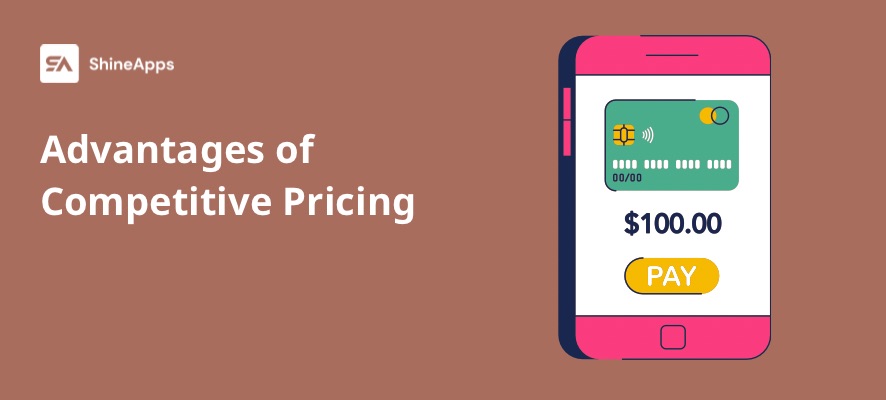
A great many competitive pricing strategies call on you to make at least some effort to keep track of what your competitors are charging. But doing it correctly can lead to significant benefits:
Higher Profits
If your prices are lower than those of your rivals, there is room to raise them and grow your profit margins while maintaining your price advantage. You might even establish higher prices (if you have the product quality or innovation to meet your competitors’ prices) compared to the prices of your competitors and rely on your unique value offer to win the sale.
Bring in new customers
The best strategy for shops to draw in price-conscious customers looking for the best deal is likely to undercut the competition.
Increase Customer Loyalty
Let’s be clear: if you rely too much on lowering your competition’s prices, you’re quite unlikely to develop a devoted consumer base. There’s always going to be a less expensive option in a fully global economy.
Customers are more likely to continue with you if they enjoy your product and believe your pricing is competitive with the market, which will improve customer happiness, encourage loyalty, and increase their lifetime value.
Better Understanding Of The Market And Customers
An in-depth understanding of the market environment and your competitors’ pricing strategies is necessary for the successful implementation of a competitive pricing plan. Your understanding of the customers you serve should improve as a result of all that research and data, which will also help you make your value proposition stronger.
A Greater Market Share
Numerous businesses, including Netflix and Uber, use aggressive, competitor-focused pricing strategies to quickly increase their market share before raising their rates once they have gained control.
Competitive Pricing Risks
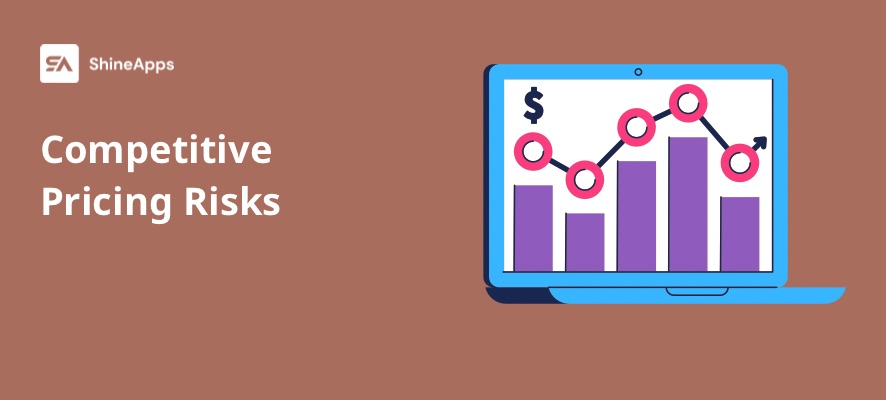
Competitive pricing is not 100% risk-free, as is very little else in the world of e-commerce. Following are some of the main reasons why competitor-focused pricing is not a good fit for your brand or market:
Limited Innovation And Differentiation
Apple didn’t become one of the most well-known and popular tech brands in the world by always looking to undercut its competitors.
Instead, the business developed recognition by producing popular, innovative, high-quality items that were backed by outstanding customer service. If it had only concentrated on offering competitive pricing, it might have missed all those additional important elements.
You run the danger of disregarding innovation and difference when you are overly focused on price competition, offering customers few reasons to select.
Potential Brand Image and Reputational Damage
Low prices may suggest exceptional value for some customers. Others, however, believe that if a product’s price is low, it must be of poor quality. As a result, if your pricing strategy is based on undercutting your competition, you run the danger of being seen as a low-end, budget brand.
Reliance on Competitor Pricing & Market Conditions
The fact that your top competitors will effectively take control of your pricing strategy is another clear disadvantage of competitive pricing.
If they lower their pricing, you might have to lower yours as well, forcing you to continually change your prices depending on changes in the marketplace. Additionally, you can find it difficult to raise your rates if you see a cost increase that doesn’t impact other businesses, which could force you to operate with much lower margins.
The Best Methods For Competitive Pricing
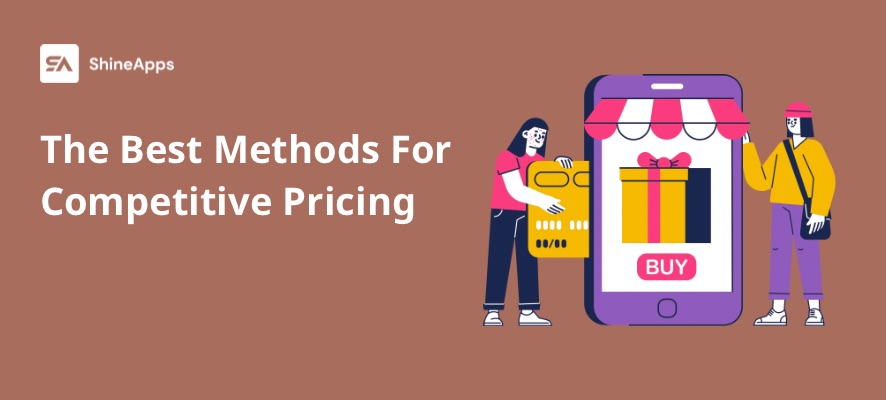
Clearly, competitive pricing won’t help you achieve all of your sales and revenue targets. However, when used wisely, it may make you stand out from the competition, underline your value proposition, and increase conversions.
Check out these best practices before starting your competitor-focused pricing journey to increase your chances of success.
Carry Out Extensive Market Research And Analysis
Understanding the terrain by examining what your competitors are doing is the first step in putting a competitor-focused pricing strategy into action. To conduct an overview of competitive pricing, follow these steps:
- List at least five of your main competitions – businesses offering to the same consumers with similar products.
- Create a brief value description for each brand of competition. Describe their position in the market, their ideal customer base, and how they set themselves apart in a few bullet points.
- Decide on a regular study schedule. For example, three months after you begin your analysis.
- Evaluate pricing strategies. Determine the price points and promotional offers of competitors. Arrange this data into a spreadsheet, either as the average across a product category or as the most similar specific products sold by each seller. To ensure your data is current, check in regularly throughout the study period.
- Throughout your study time, keep track of how frequently they have sales and other discounts. How big are the discounts? Do these apply to the whole website or just certain product categories?
- Analyze the data. Determine the average cost per item that each brand charges, accounting for sales and other discounts.
You’ll most likely be left with a rather wide range of costs unless your niche works with extremely restricted margins. You can now choose where you want to fit in.
Create specific pricing objectives and goals
Keep in mind that your pricing strategy must be in line with the main goals of your business, where you stand in the market, and what you already offer as value.
Start by clearly defining your price objectives. Do you want to increase your market share? maximize sales? keep a strong profit margin?
Then give numbers to your goals, such as the minimal profit margin you predict or the targeted annual revenue growth. In this way, you may create a pricing plan that promotes rather than defeats the goals of your business.
Based on market and customer insights, decide on a Pricing strategy
You should have enough previous sales data to analyse, and at the very least, some sense of who your customers are and why they choose to do business with you, unless the business is very new. These insights will be quite helpful as you develop your pricing approach.
Examine your historical data to learn how various pricing points and methods of marketing affect things like:
- Average order value
- Repeat purchase rate
- Customer lifetime value
- Sales volume
- Total revenue
Then do a customer survey. Find out what made them choose you over your competitors, whether they think you provide great value for the money, and whether they plan to make another purchase from you.
Finally, keep in mind that your business does not operate in a vacuum. There are numerous more elements that could either increase or decrease the effectiveness of your pricing strategy, such as changing customer purchasing patterns and rising supply chain expenses. Your strategy must be flexible enough to take into account such outside forces.
Regularly Monitor And Adjust Prices
It takes ongoing monitoring and adjustment to create a competitor-focused pricing strategy based on variables including supply chain disruption, changes in customer demand, and the entry of new disruptors into your market.
Your goals will also unavoidably shift over time. You might go from being a low-cost disruptor to a market leader offering superior goods at a premium price as your business grows and wins more market share.
Because of this, you ought to regularly evaluate your prices and pricing strategy to make sure they are still supporting your business’s goals. In addition, you should keep away from enforcing too harsh or frequent price adjustments because doing so runs the danger of losing customers and hurting your brand.
In Conclusion
In summary, by using the following five steps, you may keep an eye on your competitors’ pricing:
- Step One – Determine who your main competitors are.
- Step Two – Decide on a monitoring schedule, such as monthly.
- Step Three – Examine their pricing for each product or for the largest categories and subcategories.
- Step Four – Keep track of how often they provide sales and other discounts.
- Step Five – Determine the average price that each competitor business charges for a specific product.
Note: Step three requires a lot of manual work, so you might want to invest in a data-scraping or price-monitoring tool to ease the strain.
Hope this complete guide from us can help you create an effective competitive pricing analysis!



